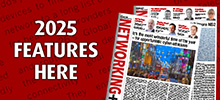02 October 2023

According to the EagleEye SaaS Spend report, CFOs are cutting software spend by 10-30%. According to the report, departments with the highest software spending are engineering (IT, security, data) (45%), marketing (19%), sales (17%), finance (7%), customer success (7%), and HR (5%).
However, when it comes to the number of apps, marketing (76) tops the list, followed by engineering (56), sales (42), finance (35), HR (31) and customer success (22). When it comes to the top software categories purchased, cloud providers, CRM, project management, and data analytics, in that order, are at the top of the table. The report spotlights the emergence of ‘Citizen SaaS,’ namely individual buyers or small teams buying SaaS tools that they need to do their jobs. Over 40% of SaaS spending across companies is originating from them.
The marketing, sales and customer success teams also have the dubious distinction of being the departments with the most unused apps within a year of buying. They often acquire various tools to address their immediate requirements but frequently switch to new tools when these needs change.
A big revelation in the report is that, on average, companies spend $1,000-$3,500 on software tools per employee annually. Digging a bit deeper, a company with 10-100 employees has a total SaaS spend between $250k to $1 million spread over 50-70 apps. On the other extreme, a company with 2500-5000 employees has a total SaaS spend between $40-100 million spread across 300-400 apps.
Another interesting highlight of the report is that SaaS vendors in categories like video conferencing, testing, collaboration, storage, helpdesk, payroll management and mail automation are most open to negotiating pricing due to the plethora of options available in these categories for customers. On the flip side, vendors in categories like CRM, enterprise workflow, and business intelligence are least likely to negotiate as they are deeply entrenched in the company’s everyday functioning and changing these vendors would mean a change in processes and by extension, the working culture of the company. In fact, these vendors might steadily increase their pricing in the coming few quarters thanks to their stickiness.
“In today's business world, every dollar counts for more than ever before. Given that software spend ranks as the third-largest expense in organizations it has become vital for CFOs and CIOs to scrutinize how they allocate their software budgets to ensure that every dollar spent returns a significant value. And it’s unsurprising that companies are looking at SaaS spend per employee as an important metric and accounting for that cost in addition to employee salaries and benefits,” said Nidhi Jain, CEO and founder, CloudEagle.
The main emerging trends observed by the report include the increasing power of the CFO when it comes to SaaS buying, a renewed emphasis on Return on Investment (ROI) & Total Cost of Ownership (TCO) analysis, vendor consolidation, the growing power of ‘Citizen SaaS’ buyers, the influence of AI, and buyer-centric pricing models.

.jpg?lu=468)








